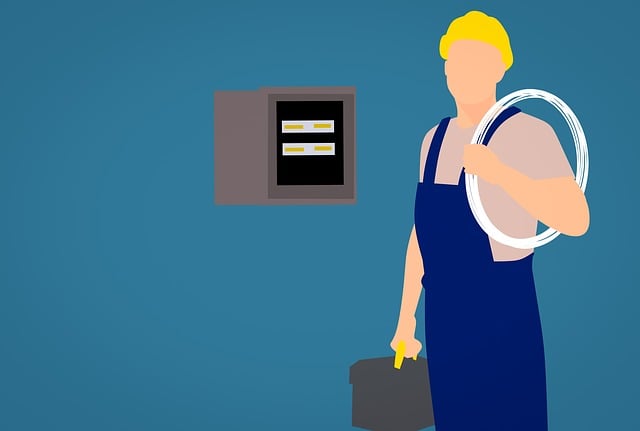Implementing effective customer financing strategies is crucial for contractor success in a competitive market, fostering client retention and project feasibility. Before offering loans, assess loan viability through six key steps including reviewing project details, analyzing financial statements, and evaluating risk mitigation strategies. Understand interest rates, fees (origination, processing), and their impact on customer financing for contractors, comparing APRs from different lenders to secure the best deal. Transparency in these processes benefits both parties, ensuring clear budgets and long-term business sustainability in the construction industry.
“In today’s competitive construction landscape, understanding customer financing options is crucial for contractors aiming to secure projects. This comprehensive guide delves into the art of estimating contactor loan fees, empowering professionals to make informed financial decisions. From assessing loan feasibility through step-by-step analysis to calculating interest rates and uncovering hidden costs, each section provides invaluable insights. Learn to navigate the process effectively, ensuring accurate estimates for a smoother journey towards project completion.”
- Understanding Customer Financing for Contractors
- Assessing Loan Feasibility: A Step-by-Step Guide
- Calculating Interest Rates and Fees
- Estimating Processing and Origination Charges
- Additional Costs to Consider for Accurate Estimation
Understanding Customer Financing for Contractors

Many contractors often need to estimate loan fees for their customers, especially when offering financing options for large-scale projects. Understanding customer financing is a crucial aspect of running a successful contracting business. By providing flexible payment plans, contractors can attract more clients and secure long-term partnerships. This approach is particularly beneficial in the competitive construction industry, where retaining customers and managing cash flow are key to sustainability.
Contractors should familiarize themselves with various customer financing models, such as interest rates, repayment terms, and hidden fees. Offering tailored financing solutions not only improves client satisfaction but also sets a contractor apart from their competitors. With the right financing strategy, contractors can ensure project feasibility, maintain strong business relationships, and foster long-term growth.
Assessing Loan Feasibility: A Step-by-Step Guide

Assessing Loan Feasibility for Customer Financing in Construction is a crucial step before offering contractor loans. It involves a systematic process to determine if the loan request aligns with the borrower’s financial capabilities and project viability. Here’s a step-by-step guide:
1. Review Project Details: Start by thoroughly understanding the construction project, including scope, budget, timeline, and expected revenue. These elements are vital for gauging the potential for successful repayment.
2. Analyze Financial Statements: Request and examine the contractor’s financial statements, such as income statements, balance sheets, and cash flow projections. This step helps assess their overall financial health, debt levels, and ability to absorb additional loan obligations while maintaining operational continuity.
3. Assess Market Conditions: Consider market trends and demand for similar construction projects in the area. A strong market with consistent project opportunities increases the likelihood of timely revenue generation, facilitating loan repayment.
4. Evaluate Past Performance: Look at the contractor’s historical performance on previous projects, including their ability to complete tasks within budget and schedule, and their track record of repaying financing. This provides insights into their reliability and financial stewardship.
5. Calculate Loan-to-Value Ratio: Determine the proposed loan amount relative to the project cost. A manageable LTV ratio, typically below 70-80%, suggests a more feasible repayment plan.
6. Assess Risk Mitigation Strategies: Consider any risk mitigation measures the contractor plans to implement. These could include insurance policies, contingencies for potential delays or cost overruns, or partnerships with reliable subcontractors.
Calculating Interest Rates and Fees

When estimating contactor loan fees, understanding interest rates is paramount. Customer financing for contractors often involves complex calculations that determine the overall cost of borrowing. Lenders use various methods to calculate interest, such as annual percentage rate (APR), which includes both the interest and any additional fees. It’s crucial to compare APRs from different lenders to secure the best deal for your business.
Fees can significantly impact the final cost of a loan. Apart from the interest rate, contractors should be aware of origination fees, processing charges, and potential prepayment penalties. Some lenders may also charge administrative or documentation fees. Thoroughly reviewing the terms and conditions will help you anticipate these costs, ensuring you have an accurate picture of the financial commitment involved in customer financing for contractors.
Estimating Processing and Origination Charges

Estimating processing and origination charges is a critical aspect of understanding the overall cost of a contractor loan. These fees, often referred to as ‘origination fees’ or ‘processing fees’, represent the administrative costs incurred by lenders when facilitating customer financing for contractors. They cover various tasks, from underwriting and document preparation to credit checks and setting up the loan.
When assessing these charges, borrowers should consider them as a percentage of the loan amount. Lenders typically disclose these fees upfront, allowing customers to budget effectively. For instance, a processing fee might be quoted as 1% of the loan value. Borrowers should also inquire about any additional costs that could arise during the loan’s lifecycle, ensuring transparency in the financing process for contractor businesses.
Additional Costs to Consider for Accurate Estimation

When estimating contactor loan fees, it’s crucial to go beyond the primary financing cost and consider several additional expenses that can significantly impact the overall budget. Customer financing for contractors involves more than just the loan amount; various indirect costs must be factored in for an accurate estimation. These include processing fees charged by lenders, which can vary based on the type of loan and borrower’s creditworthiness. Some financiers may also levy application or setup fees, one-time charges that cover administrative tasks involved in setting up the financing structure.
Moreover, interest rates, whether fixed or variable, play a pivotal role in determining the final fee burden. Contractors should be prepared for potential fluctuations in market interest rates, which can affect both the loan terms and overall project costs. Additionally, consider the impact of early repayment penalties, especially if you anticipate having the funds available to repay the loan ahead of schedule. These penalties can add up, so it’s essential to factor them into your estimation to avoid unexpected financial surprises during the project execution.
When it comes to estimating contactor loan fees, a thorough understanding of customer financing options is key. By following the step-by-step guide provided, assessing loan feasibility, calculating interest rates and fees, estimating processing charges, and considering all associated costs, contractors can offer competitive financing packages that enhance client relationships while maintaining profitability. Implement these strategies to successfully navigate the landscape of customer financing for contractors.
